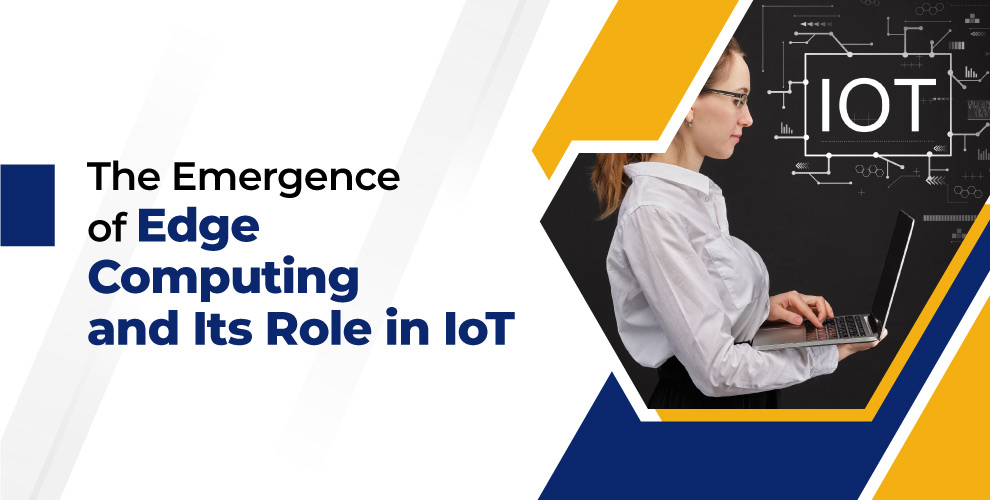Edge computing provides various purposes in the current IoT landscape. IoT devices are free from the latency and connectivity issues that would prevent the implementation of various IoT use cases with the distributed, local computing model. This fundamental technology serves as the foundation for internet of things applications that involve classified data and real-time or low-latency decision-making that takes place in settings where cloud connectivity is non-existent and is especially data-intensive, like industrial IoT deployments. Both technologies are trending and emerging, which makes it important for students pursuing a B.Sc. incomputer science at Coimbatore College to include these topics in their syllabus. However, in this article,you get to know the role of edge computing in IoT.
Cloud computing vs. edge computing:
When compared to cloud computing, edge computing devices analyze the data locally, whereas cloud-analyzed data has latency issues. This has the potential to make or break IoT devices when it comes to precise, time-sensitive tasks. With the support of edge computing, it can leverage the Internet of Things securely, privately, and economically without concern about network overloads or data breaches. Edge computing offers the redundancy and resilience of jobs, which are necessary. Since the process is distributed, if something goes wrong, operations carry on without interruption while the problematic component is addressed. It is slightly opposite to the centralized process. It is not like edge computing and cloud-based analysis coexist; they frequently do. In certain situations, like providing some real-time data or selecting data that gradually uploads to the cloud and can be used for deep or sophisticated analysis techniques.
What are the benefits of edge computing and IoT?
With the data processing and storage requirements of Internet of Things devices, edge computing acts as a local source. The following are some advantages of combining edge and IoT:
- Decreased connection latency between central IT networks and IoT devices.
- Quicker reaction times and more operational effectiveness.
- More bandwidth on the network.
- Continued offline system operation in the event of a lost network connection.
- Using analytics algorithms and machine learning, local data processing, aggregation, and quick decision-making are achieved.
- Data from the edge can be delivered through an IoT gateway to the edge systems for local processing or back to a cloud or centralized server.
Role of edge computing solutions in IoT for businesses.
- By analyzing information before it travels over the WAN, edge computing helps businesses save money on traffic. Here, the costs are greatly reduced by pre-aggregating the data using edge computing. Cloud computing is even used by manufacturers to maintain remote devices in a preventive manner. It filters the data so that only threshold violations and anomalies are delivered to the cloud.
- Businesses using corporate mobility options and continuous data transmission from the device to the cloud encounter significant risks in today’s environment. Because edge computing disperses and decentralizes data among several devices, it becomes more difficult for hackers to bring down the entire network in one go. Therefore, it greatly enhances data security, which is advantageous to organizations.
- Strict latency requirements are common in corporate applications; however, latency may be an issue for the security of applications. Edge computing can help here by facilitating quicker communication between edge devices and the cloud. Furthermore, edge computing systems assist in bringing the processing power closer to the devices, which greatly lowers latency and workload.
- While protecting IoT devices from attack, organizations can enhance cybersecurity by implementing IoT edge computing solutions. Because cloud data is centralized, it is more vulnerable to attacks, and hackers are even known to attempt to break the data into a single network. This is where edge computing will help with cybersecurity by distributing information to several devices or networks. Performance depends more on keeping corporate data secure, which may be the reason why companies are using reputable companies to design IoT apps.
- In the Internet of Things era, businesses need to be able to scale quickly, and spread-edge nodes can scale more quickly than huge data centers. Employing edge computing, compared to the cloud, enables companies to expand their IoT networking despite taking storage capacity into consideration. While it is undoubtedly challenging for companies to scale up their physical infrastructure faster, edge computing architecture enables them to do so. Businesses can also benefit from increased scalability and network awareness with this method.
- Computing power near the real location of a physical device or data source is advantageous for IoT. The data generated by IoT devices must be examined at the edge rather than having to travel back to a central site before analysis can occur, which will allow the data to react more quickly or prevent problems.
The above-mentioned points are an overview of edge computing and IoT benefits in today’s times. You can learn better if you enroll in the B.Tech. Artificial Intelligence and Data Science Colleges in Coimbatore, since future business operations depend on technology, which every student needs to understand.


